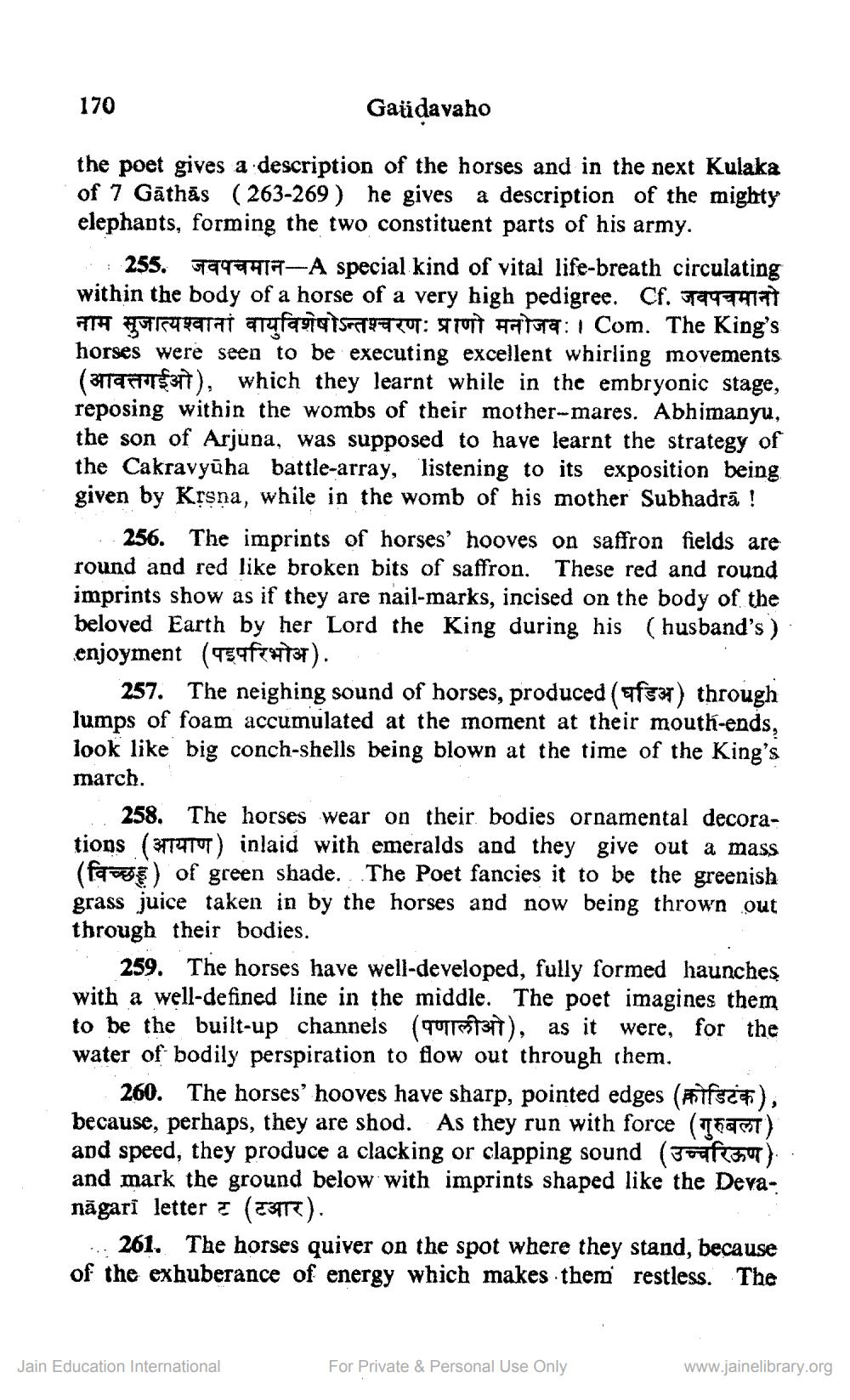________________
170
Gaüdavaho
the poet gives a description of the horses and in the next Kulaka of 7 Gāthās (263-269) he gives a description of the mighty elephants, forming the two constituent parts of his army.
255.5994-A special kind of vital life-breath circulating within the body of a horse of a very high pedigree. Cf. 741477 FTA fragatat arafagiatse<UT: STUTT Fora: 1 Com. The King's horses were seen to be executing excellent whirling movements (TCFT311), which they learnt while in the embryonic stage, reposing within the wombs of their mother-mares. Abhimanyu, the son of Arjuna, was supposed to have learnt the strategy of the Cakravyūha battle-array, listening to its exposition being. given by Krsna, while in the womb of his mother Subhadrā !
256. The imprints of horses' hooves on saffron fields are round and red like broken bits of saffron. These red and round imprints show as if they are nail-marks, incised on the body of the beloved Earth by her Lord the King during his (husband's ) enjoyment (95967873).
257. The neighing sound of horses, produced (aftar) through lumps of foam accumulated at the moment at their mouth-ends, look like big conch-shells being blown at the time of the King's march.
258. The horses wear on their bodies ornamental decorations (3T4T) inlaid with emeralds and they give out a mass (fawory of green shade. The Poet fancies it to be the greenish grass juice taken in by the horses and now being thrown out through their bodies.
259. The horses have well-developed, fully formed haunches with a well-defined line in the middle. The poet imagines them to be the built-up channels (91101317), as it were, for the water of bodily perspiration to flow out through them.
260. The horses' hooves have sharp, pointed edges (Alfsch), because, perhaps, they are shod. As they run with force (1500T) and speed, they produce a clacking or clapping sound (39fct) and mark the ground below with imprints shaped like the Devanāgari letter 3 (E34T).
. 261. The horses quiver on the spot where they stand, because of the exhuberance of energy which makes them restless. The
Jain Education International
For Private & Personal Use Only
www.jainelibrary.org




